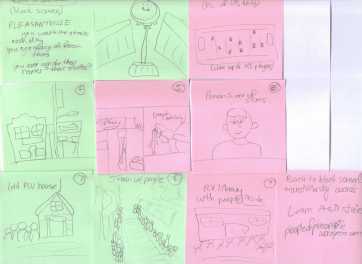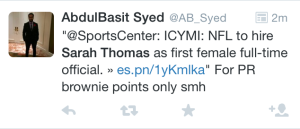Being in the sports media business as a female can be hard, especially when you hear stories about sexual harassment, discrimination, prejudice and all that. It can certainly make things hard and maybe even defer some from pursuing careers in this area.
However, I think its important to note that there are good people in the business as well who genuinely do care about their co-workers and want to help them, regardless of gender.
Kristi Dosh, is “a professional writer, speaker, sports business analyst, content marketer, attorney and author” according to her biography on her website. She wrote a post recently titled “My Experience Being A Woman in The Male-Dominated Sports Media Industry” talking about some influential, male, co-workers that really took the time to help her out throughout her career.

Picture from kristidosh.com
She talks particularly about Tim Brando, a national television and radio host. Brando was one of the first people Dosh met when she first started out and they hit it off ever since.
Dosh notes that Brando has been a huge influence in her career and was even a big part of her latest book, “Saturday Millionaires”. I personally think that it’s great to see someone talking positively about their experiences in this industry as a female.
Now, talking about the bad is also important because its things that we as a society need to bring attention too. But not everything has to be grim and grey! Dosh’ post was very refreshing and really reminded me of the time that i’ve spent working with our Athletic Department at Pace.
Though mainly dominated by males, from day 1 I was welcomed and treated so nicely by everyone there! I learned a lot during my time there and it really helped me get a clearer picture of what I want to do after graduation (though that’s still up in the air). I’ve particularly had one person who really helped me out a lot! He became a mentor to me and has really been so great in just being there for me, helping me out with any questions, providing me with advice and always willing to lend a helping hand and a friendly smile! My experience wouldn’t have been the same without him!
And its great to know that there are people out there that we females can trust and form strong working relationships with, as they become not just mentors and co-workers but also friends. So I really encourage others to take a page from Dosh’s book and post about their positive experiences as women in the sports media world.
What are your thoughts? Do you think that talking about the positives is just as important as talking about the negatives?










